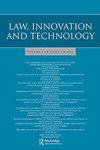人工智能与机器人:为新的欧洲民法寻找一个领域
Q1 Social Sciences
引用次数: 4
摘要
摘要2017年,欧洲议会发布了一项决议,呼吁欧盟委员会根据民法制定新的解决方案,以应对当今机器人和人工智能的快速发展。该决议推动制定以机器人为重点的新侵权法,并要求制定机器人的新定义。针对该决议,本文进行了法律认知语言学分析,得出三个结论:首先,定义方法不是确定机器人和人工智能监管范围的最佳方法;第二,决议错误地认为,新的民法解决方案应侧重于区分人工智能和机器人,机器人应被视为确定监管范围的焦点;第三,任何新规范都应植根于人工智能的概念,而不是像决议所建议的那样植根于机器人的概念。本文章由计算机程序翻译,如有差异,请以英文原文为准。
AI versus robot: in search of a domain for the new European civil law
ABSTRACT In 2017, the European Parliament issued a Resolution calling on the Commission to elaborate new solutions based on civil law that could respond to the rapid present-day development of robotics and AI. The Resolution, pushing for the preparation of new tort law focusing on robots, postulates that a new definition of robot be prepared. Responding to the Resolution, this paper consists in a legal-cognitive-linguistic analysis which draws three conclusions: firstly, that the definitional method is not the best approach to determining the scope of the regulation of robotics and AI; secondly, that the Resolution is incorrect in assuming that a new civil law solution should turn on differentiating between AI and robots and that robots should be treated as focal in determining the scope of the regulation; and, thirdly, that any new norms should be rooted in the concept of AI and not, as proposed by the Resolution, in the concept of robot.
求助全文
通过发布文献求助,成功后即可免费获取论文全文。
去求助
来源期刊

Law, Innovation and Technology
Social Sciences-Law
CiteScore
4.50
自引率
0.00%
发文量
18
期刊介绍:
Stem cell research, cloning, GMOs ... How do regulations affect such emerging technologies? What impact do new technologies have on law? And can we rely on technology itself as a regulatory tool? The meeting of law and technology is rapidly becoming an increasingly significant (and controversial) topic. Law, Innovation and Technology is, however, the only journal to engage fully with it, setting an innovative and distinctive agenda for lawyers, ethicists and policy makers. Spanning ICTs, biotechnologies, nanotechnologies, neurotechnologies, robotics and AI, it offers a unique forum for the highest level of reflection on this essential area.
 求助内容:
求助内容: 应助结果提醒方式:
应助结果提醒方式:


